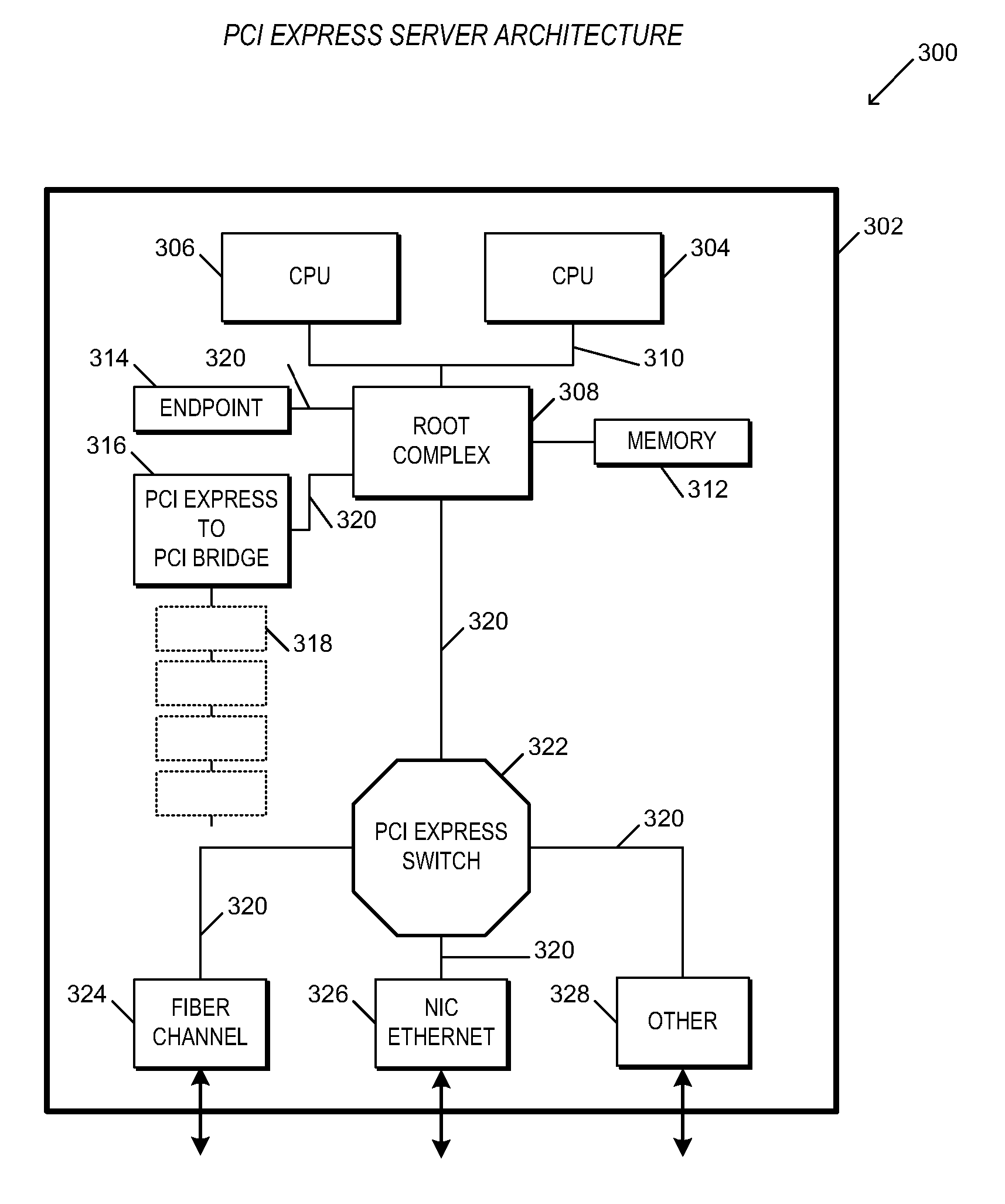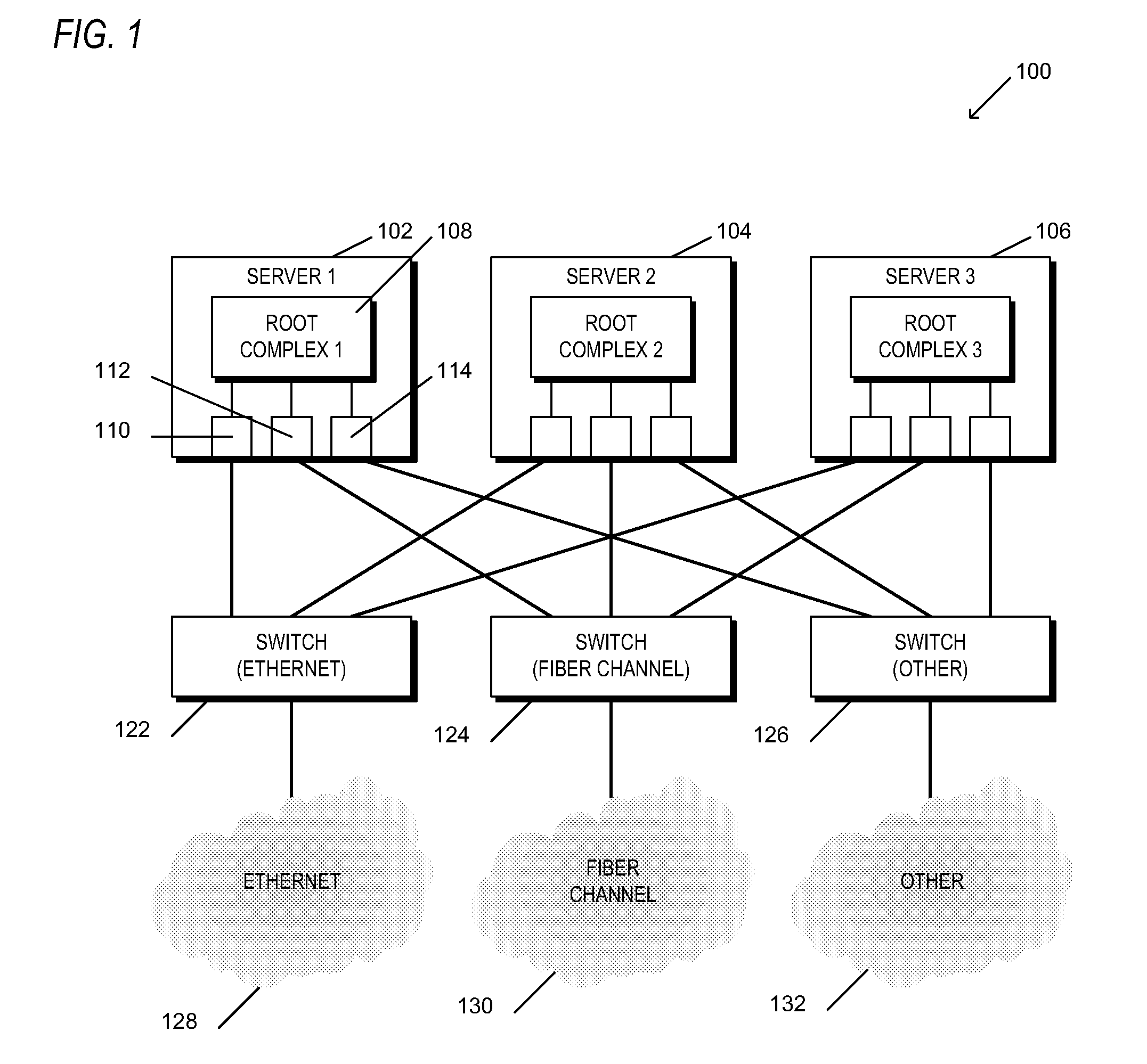Switching apparatus and method for providing shared I/O within a load-store fabric
a technology of load-store fabric and switching apparatus, which is applied in the direction of data switching network, instruments, digital transmission, etc., can solve the problems of inability to switch between the two, the difficulty of placing a processing complex, and the inability to use the same i/o interface and i/o devices within every computer, etc., and achieves the effect of reducing the cost of switching between the two
- Summary
- Abstract
- Description
- Claims
- Application Information
AI Technical Summary
Benefits of technology
Problems solved by technology
Method used
Image
Examples
Embodiment Construction
[0056] The following description is presented to enable one of ordinary skill in the art to make and use the present invention as provided within the context of a particular application and its requirements. Various modifications to the preferred embodiment will, however, be apparent to one skilled in the art, and the general principles defined herein may be applied to other embodiments. Therefore, the present invention is not intended to be limited to the particular embodiments shown and described herein, but is to be accorded the widest scope consistent with the principles and novel features herein disclosed.
[0057] Referring to FIG. 1, a block diagram 100 is shown of a multi-server computing environment. The environment includes three servers 102, 104 and 106. For purposes of this application, a server is a combination of hardware and software that provides services to computer programs in the same or other computers. Examples of computer servers are computers manufactured by Del...
PUM
 Login to View More
Login to View More Abstract
Description
Claims
Application Information
 Login to View More
Login to View More - R&D
- Intellectual Property
- Life Sciences
- Materials
- Tech Scout
- Unparalleled Data Quality
- Higher Quality Content
- 60% Fewer Hallucinations
Browse by: Latest US Patents, China's latest patents, Technical Efficacy Thesaurus, Application Domain, Technology Topic, Popular Technical Reports.
© 2025 PatSnap. All rights reserved.Legal|Privacy policy|Modern Slavery Act Transparency Statement|Sitemap|About US| Contact US: help@patsnap.com



